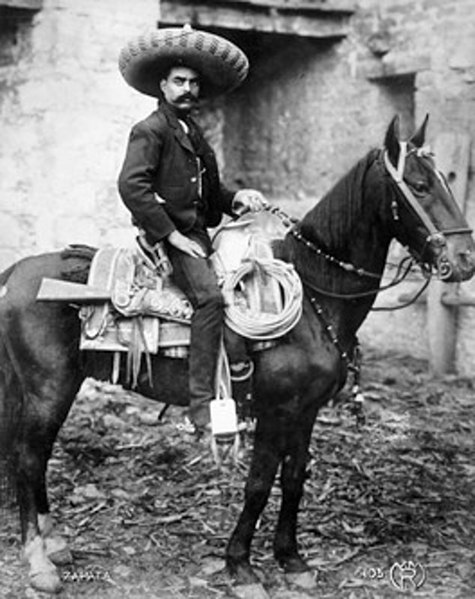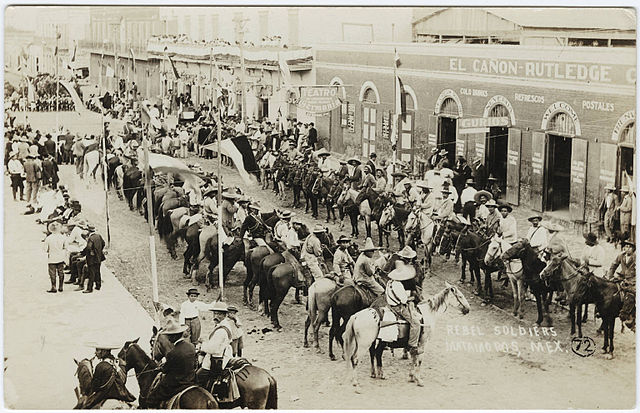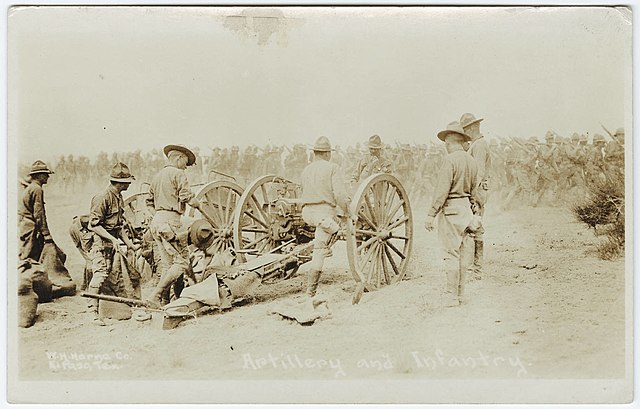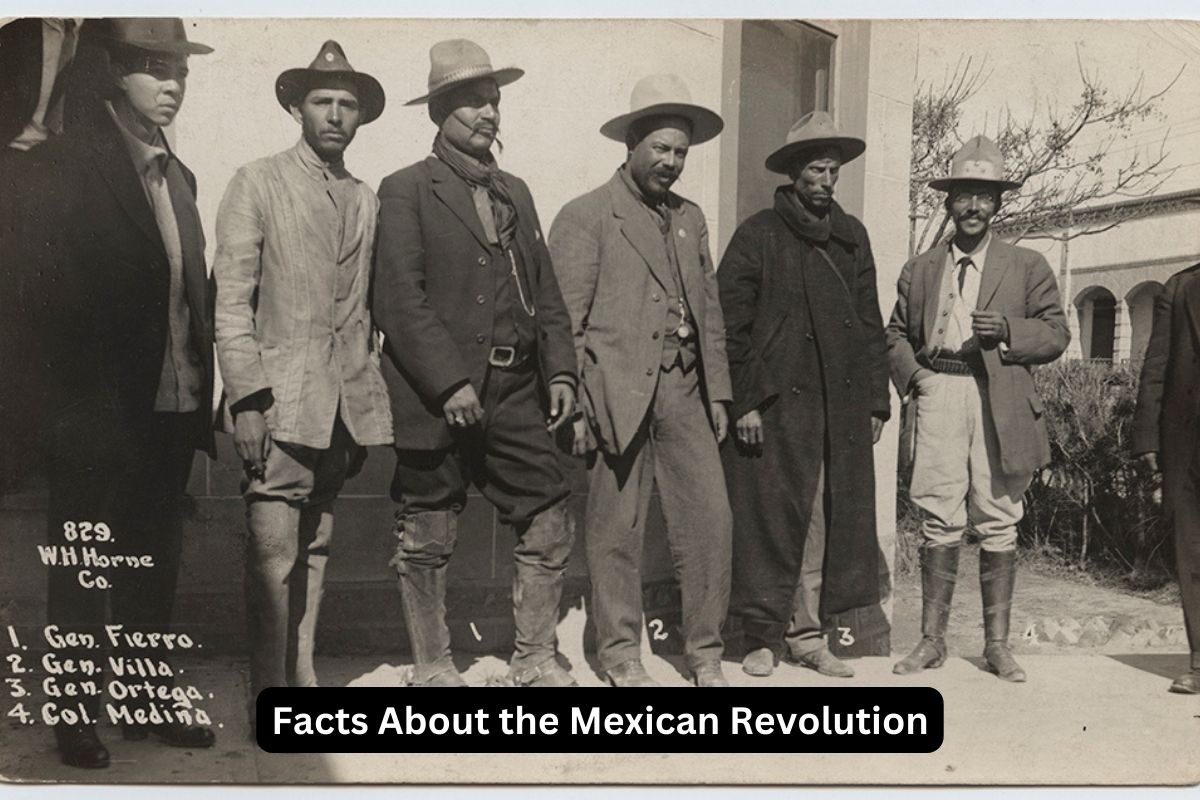The Mexican Revolution, spanning from 1910 to approximately 1920, stands as one of the most transformative periods in Mexican history.
Fueled by simmering discontent over social inequality, political repression, and economic exploitation under the dictatorship of Porfirio Díaz, this uprising saw a diverse array of factions and leaders united in their quest for profound societal change.
From the ideals of Francisco I. Madero to the revolutionary zeal of figures like Emiliano Zapata and Pancho Villa, the revolution reshaped Mexico’s political landscape, culminating in the adoption of the progressive Constitution of 1917.
This brief introduction sets the stage for exploring the complex and multifaceted revolution that reshaped Mexico’s destiny.
Mexican Revolution Facts
1. Started in 1910, lasting roughly until 1920
The Mexican Revolution commenced in 1910, triggered by the call to arms by Francisco I. Madero through the Plan of San Luis Potosí.
This uprising continued for about a decade, with armed conflicts and political upheaval shaping the landscape of Mexico.

2. Sparked by social inequality, land disputes, and political corruption
Deep-seated social inequality, exacerbated by the rule of Porfirio Díaz, was a primary catalyst for the revolution.
Also Read: Mexican War of Independence Timeline
Under Díaz’s regime, a small elite controlled most of the wealth and land, while the majority of Mexicans, especially indigenous populations and peasants, endured poverty and exploitation.
Political corruption and repression further fueled discontent among the populace.
3. Overthrew the dictatorship of Porfirio Díaz
Porfirio Díaz had maintained a firm grip on power for over three decades, ruling Mexico as a dictator. While his regime brought about economic growth and modernization, it came at the cost of widespread repression and limited political freedoms.
Also Read: Timeline of the Mexican Revolution
Francisco I. Madero’s challenge to Díaz’s rule galvanized various factions to rise against the dictatorship, leading to its eventual overthrow and setting the stage for the revolution.
4. Francisco I. Madero initiated the revolution with the Plan of San Luis Potosí
Francisco I. Madero emerged as a central figure in the early stages of the revolution. His Plan of San Luis Potosí, proclaimed in 1910, called for the overthrow of Porfirio Díaz’s dictatorship and fair elections to restore democratic governance.
Madero’s vision attracted widespread support, especially from the middle class and intellectuals disillusioned with Díaz’s regime.

5. Key figures include Emiliano Zapata, Pancho Villa, Venustiano Carranza, and Álvaro Obregón
Key figures in the Mexican Revolution, including Emiliano Zapata, Pancho Villa, Venustiano Carranza, and Álvaro Obregón, each played crucial roles in shaping the course of the conflict.
Zapata’s focus on agrarian reform, Villa’s military prowess and populist reforms, Carranza’s advocacy for constitutional reforms, and Obregón’s tactical brilliance were pivotal in determining the revolution’s outcomes.
Together, they represent the diverse ideologies and interests that converged during this transformative period in Mexican history.
6. Zapata fought for agrarian reform, Villa for broader social change
Emiliano Zapata and Pancho Villa, prominent figures in the Mexican Revolution, embodied different goals.
Zapata focused on agrarian reform, advocating for land redistribution to empower rural peasants, while Villa pursued broader social and political change.
While both fought against Porfirio Díaz’s regime, Zapata’s “Tierra y Libertad” slogan symbolized his agrarian struggle, whereas Villa aimed for a more inclusive transformation.
Despite their differing approaches, both left indelible marks on Mexico’s history during this tumultuous period.

7. Resulted in the 1917 Constitution, addressing land reform and labor rights
A significant outcome of the Mexican Revolution was the adoption of the Constitution of 1917. This constitution, one of the most progressive of its time, enshrined key principles such as land reform, labor rights, and political representation.
It addressed the grievances of various revolutionary factions, incorporating provisions for agrarian reform, such as the ejido system, which aimed to redistribute land to peasants. Additionally, the constitution included protections for workers, such as the right to unionize and improved labor conditions.
Politically, it established a framework for a more democratic system, with provisions for free elections, separation of powers, and limitations on presidential authority. The Constitution of 1917 remains a cornerstone of Mexican law and governance, reflecting the ideals and aspirations of the revolution.
8. Saw foreign involvement, notably from the United States
The Mexican Revolution saw significant foreign involvement, particularly from the United States.
The U.S. government, under President Woodrow Wilson, intervened in Mexican affairs for various reasons, including economic interests and concerns over political stability along its southern border.
The U.S. supported different factions at different times, often shifting alliances based on its strategic objectives. This intervention had far-reaching consequences, influencing the course of the revolution and shaping Mexico’s relationship with its northern neighbor for years to come.

9. Led to significant social, political, and economic changes in Mexico
The Mexican Revolution resulted in profound social, political, and economic changes in Mexico. It marked the end of the long-standing dictatorship of Porfirio Díaz and ushered in a period of political upheaval and experimentation.
The revolution led to the redistribution of land to peasants, dismantling the large estates owned by the elite and implementing agrarian reforms to benefit rural communities.
Additionally, it paved the way for the nationalization of key industries, such as oil, and the expansion of social welfare programs to address the needs of the marginalized populations.
Politically, the revolution brought about a more inclusive and participatory system of governance, albeit with ongoing challenges and conflicts.
10. Inspired cultural expressions in literature, art, and music
The Mexican Revolution had a profound cultural impact, inspiring a rich legacy of literature, art, and music.
Writers such as Mariano Azuela and Martín Luis Guzmán depicted the struggles and ideals of the revolution in their novels, providing insights into the experiences of ordinary people caught up in the turmoil of war and social change.
Artists like Diego Rivera, José Clemente Orozco, and David Alfaro Siqueiros used their murals to convey the revolutionary fervor and aspirations for a more just society.
Music also played a vital role in capturing the spirit of the revolution, with corridos and ballads recounting the heroic deeds of revolutionary leaders and the struggles of the Mexican people.
This cultural legacy continues to resonate in contemporary Mexican society, serving as a reminder of the sacrifices made and the ongoing quest for social justice and equality.
